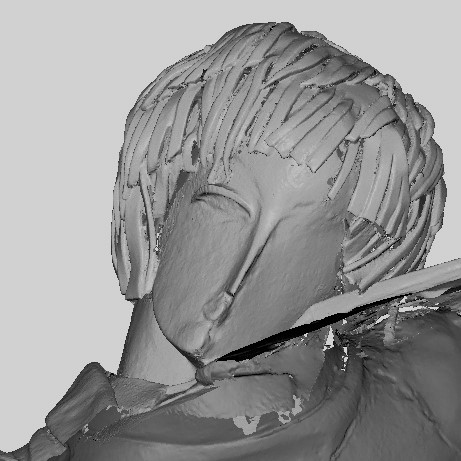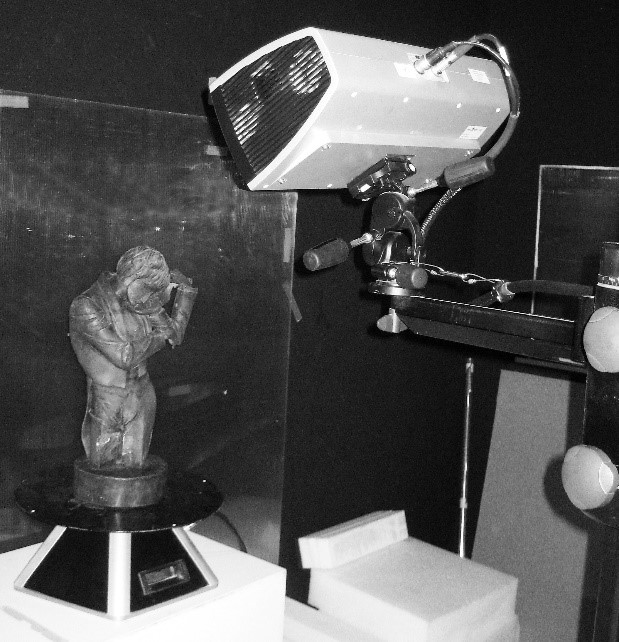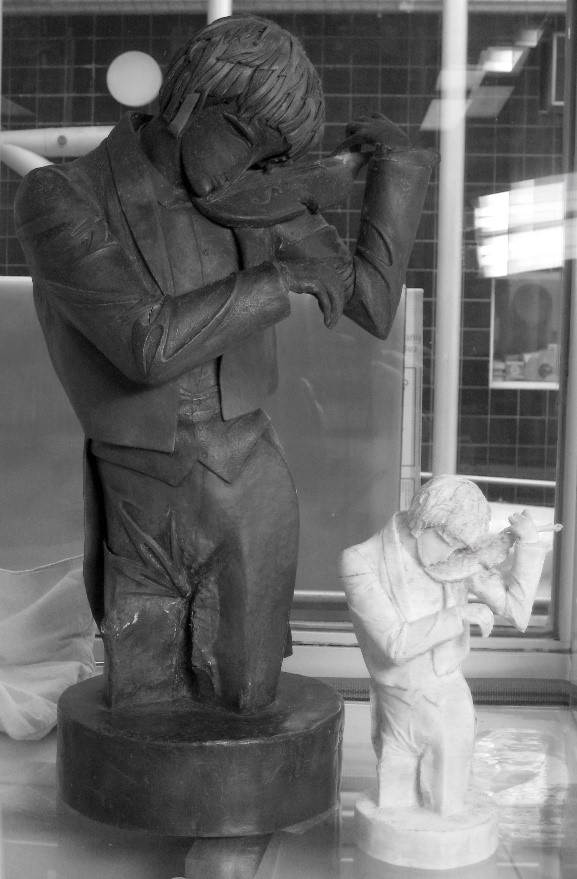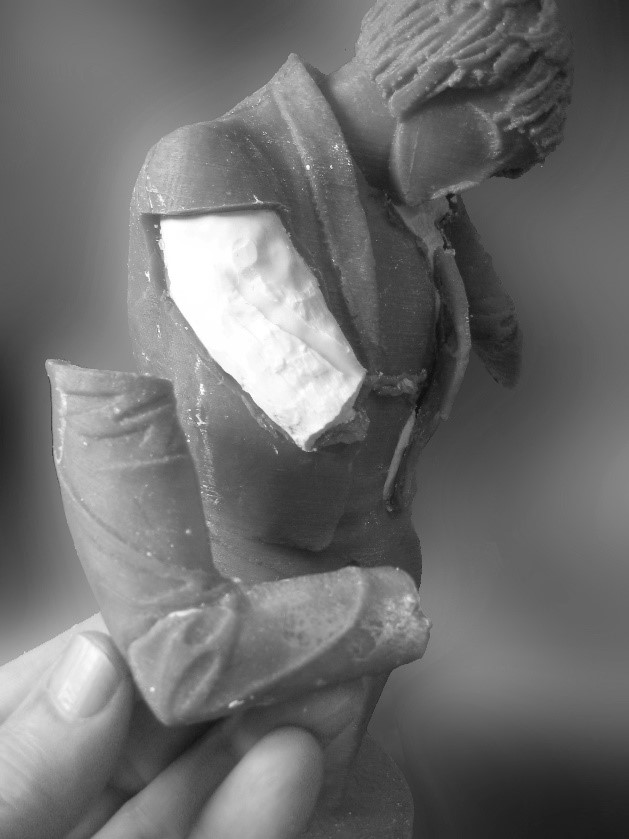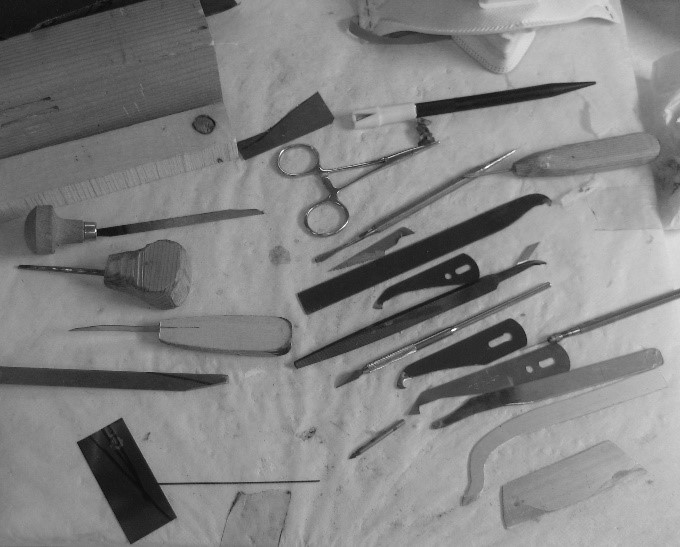Àlex Masalles
Last July we announced that the crowd-funding campaign “Save The Violinist” had concluded successfully. It was set up by the Friends of the Museum to raise the necessary funds to pay for the cost of the complex conservation-restoration work required by Pau Gargallo’s The Violinist. Thanks to the contributions of over 250 patrons, this exceptional sculpture will be back on display in the galleries of the Museu Nacional d’Art de Catalunya in a few months’ time.
We explained the action plan in this post: ‘The Violinist’ by Pablo Gargallo: a question of incompatibility. Basically, the incompatibility between the materials the work is made of, wood and lead, has caused a chemical reaction that has been working away inexorably and damaging the sculpture.
The main aim of the conservation-restoration work is to halt the causes and lessen the effects of the corrosion suffered by the lead sheets that the sculpture is made of. The first stage of the process consists of the three-dimensional digitization of the sculpture. The virtual model obtained clearly shows the deformations suffered by the sheets that line the wooden frame.
The high-resolution scanning, which used latest-generation technology, was carried out in the museum’s photographic studio and it has enabled us to obtain a digitization that records as faithfully as possible the work’s initial state of conservation before proceeding to take it apart. This three-dimensional documentation will make it easy to carefully study the execution technique, and to observe details not visible to the naked eye.
This 3D digital archive has allowed us to obtain a facsimile of the sculpture, in small format and resin, through which, in a simulation of the sheets made of wax, it has been possible to study and initiate the strategy to be followed in order to cut the different pieces of lead.
At the same time a series of tools has been got ready, made expressly to cut the lead with the minimum invasion of the original work. Detaching the sheets will make it possible to tackle, in the next stage, the treatment in a cold plasma reactor to eliminate the corrosion and stabilize the lead, the correction of the plastic deformations and the subsequent repair of the losses.
These are the first steps on this path that we have begun and which will culminate with the exhibition of The Violinist in the museum’s rooms in a passive conservation display case that will guarantee the stability of this magnificent work’s state of conservation.
In future posts we shall continue to share the latest updates on the work done on the piece.
Enllaços relacionats
To find out more about the state of conservation and its restoration
‘The Violinist’ by Pablo Gargallo
Conservador-restaurador de materials inorgànics




